Contents
The following is a list of trijet aircraft.
Cancelled before production of prototype
Currently in production
| Aircraft | Development | Production | Operation | |||||
|---|---|---|---|---|---|---|---|---|
| Start | Cancelled | Start | End | Number built | Introduced | Retired | ||
| Aerion AS2 | 2014 | 2021 | 0 | |||||
| Avro Canada VZ-9 Avrocar |  | 1953 | 1961 | 1958 | 1961 | 2 | 1958 | 1961 |
| Boeing 727 |  | 1957 | 1962 | 1984 | 1,832 | 1963 | ||
| Boeing X-48 |  | 2000 | 2005 | 2005 | 2 | 2007 | ||
| Boom XB-1 |  | 2016 | 2024 | 1 | ||||
| Bristol Type 200 |  | 1956 | 1958 | 0 | ||||
| Chengdu J-36 | 2025 | 1? | ||||||
| Convair Model 200 | 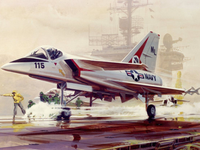 | 1973 | 1973 | 0 | ||||
| Convair XB-53 |  | 1945 | 1949 | 0 | ||||
| Dassault Falcon 50 | 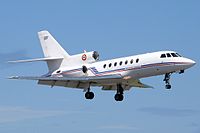 | 1974 | 1976 | 2008 | 352 | 1976 | ||
| Dassault Falcon 7X |  | 2001 | 2005 | 289 | 2007 | |||
| Dassault Falcon 8X |  | 2014 | 2016 | 116+ | 2016 | |||
| Dassault Falcon 900 |  | 1984 | 1984 | 500+ | 1986 | |||
| DC-10 Air Tanker | 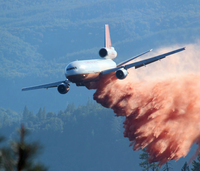 | 2002 | 2006 | 2014 | 5 | 2006 | ||
| Hawker Siddeley Trident |  | 1957 | 1962 | 1978 | 117 | 1964 | 1995 | |
| Lockheed L-1011 TriStar | 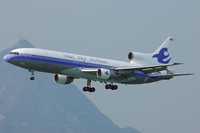 | 1967 | 1968 | 1984 | 250 | 1972 | ||
| Lockheed TriStar (RAF) |  | 1982 | 1982 | 1986 | 9 | 1986 | 2014 | |
| Martin XB-51 |  | 1945 | 1952 | 1949 | 1950 | 2 | 1949 | 1956 |
| McDonnell Douglas DC-10 |  | 1965 | 1969 | 1989 | 386 | 1971 | ||
| McDonnell Douglas KC-10 Extender |  | 1975 | 1979 | 1987 | 63 | 1981 | ||
| McDonnell Douglas MD-11 |  | 1986 | 1988 | 2000 | 200 | 1990 | ||
| NR-349 |  | 1970-72 [1] | 19?? | 0 | ||||
| SNCASO Trident | 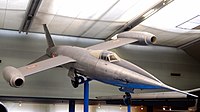 | 1948 | 1958 | 1953 | 1958 | 8 | 1953 | 1958 |
| Sukhoi-Gulfstream S-21 | 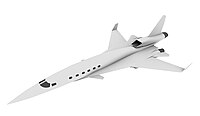 | 1987 | 0 | |||||
| Tupolev '73' | 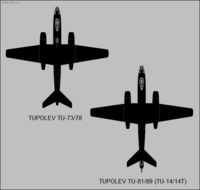 | 1946 | 1949 | 1947 | 1947 | 1 | 1947 | 1949 |
| Tupolev Tu-154 |  | 1965 | 1968 | 2013 | 1,026 | 1968 | ||
| Tupolev Tu-155 | 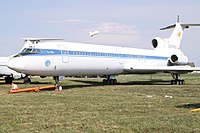 | 1988 | 1988 | 1988 | 1 | 1988 | 1991 | |
| Yakovlev Yak-141 | 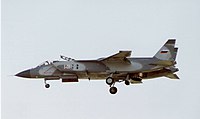 | 1975 | 1991 | 1985 | 1986 | 4 | 1987 | 1992 |
| Yakovlev Yak-38 | 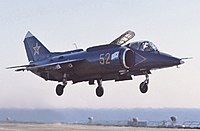 | 1968 | 1975 | 1981 | 231 | 1975 | 1991 | |
| Yakovlev Yak-40 |  | 1965 | 1967 | 1981 | 1,011 | 1968 | ||
| Yakovlev Yak-42 |  | 1972 | 1977 | 2003 | 187 | 1980 | ||